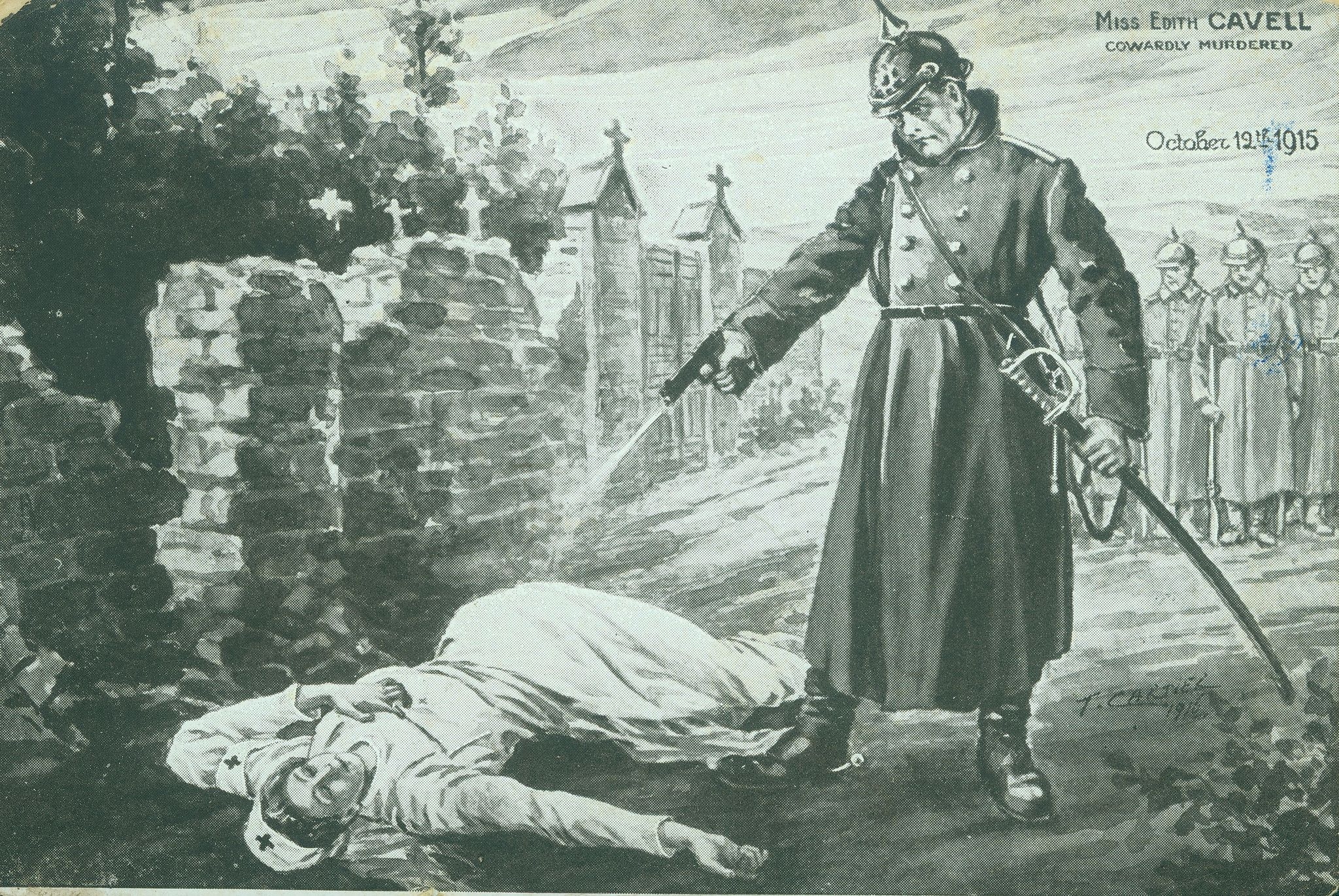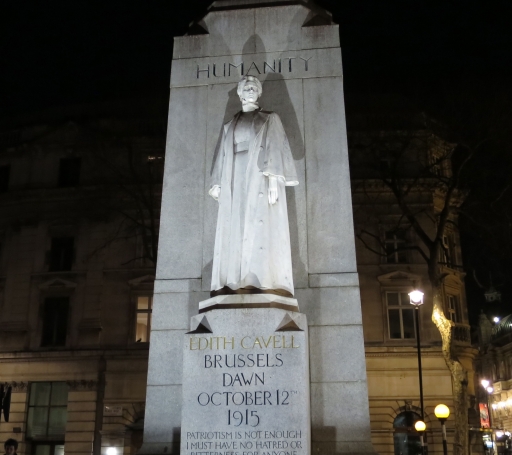Edith Cavell, a British nurse working in occupied Belgium during WW1, was executed by the Germans on October 12th 1915.
She was was tried by a court martial, together with Belgian and French resistance members, for helping Allied soldiers escape to the neutral Netherlands.
After the battles of 1914, many wounded soldiers remained behind throughout northern France and in the Ardennes in field hospitals. Other had lost contact with their units.
Edith Cavell admitted her role in sheltering around 200 soldiers and Belgian men of military age.
She was condemned to death and despite appeals for clemency by American and Spanish diplomats, shot by a firing squad in Brussels at dawn on October 12th 1915.
The death sentences on two other women, Countess Jeanne de Belleville and a French teacher Louise Thuliez, were subsequently commuted to life imprisonment.
Edith Cavell is remembered as a pioneer of nursing; for her care of all the wounded, regardless of nationality; and her last words: ‘Patriotism is not enough. I must have no hatred or bitterness for anyone.’
Espionage claims
Britain denied German allegations that Edith Cavell was involved in spying.
But a BBC radio documentary*, broadcast in September 2015, claims to have found clear evidence that close associates did send back intelligence information concealed in the clothes of soldiers returning to the UK.
Dame Stella Rimington, a former head of the British security service MI5 in the 1990s, studied Belgian military archives for the programme.
She concluded that Edith Cavell was “aware that key members of her network were in touch with Allied intelligence agencies although the extent of her personal knowledge of espionage remains unclear.
“Her main objective was to get hidden Allied soldiers back to Britain but, contrary to the common perception of her, we’ve uncovered for the first time clear evidence that her organisation was indeed involved in sending back secret intelligence information to the Allies.
“It wasn’t the major part of her efforts, but it did happen.”
 (Image: © Collectie In Flanders Fields Museum Ieper)
(Image: © Collectie In Flanders Fields Museum Ieper)
Edith Cavell’s execution sparked a storm of protest in the UK in 1915. She was depicted as a martyr on postcards, posters, and stamps, and in magazines and newspapers. Crowds of volunteers signed up to fight Germany.
The New York Times wrote a few days after her death: ‘Germany has placed herself in such a situation that the entire world, horror-stricken, will no longer believe that her cause can triumph.’
Edith Cavell was the daughter of a Church of England vicar in Norfolk. She was invited to become director of Belgium’s first training school for nurses by the eminent surgeon, Dr Antoine Depage, in 1907.
When war broke out in August 1914, she was visiting her widowed mother in Norwich. She returned to Belgium, saying ‘at a time like this, I am needed more than ever.’
Edith Cavell’s body was brought back to Britain after the First World War and reburied at Norwich Cathedral in May 1919 after a funeral service at Westminster Abbey.
Centenary coin
In May 2015, Britain’s Royal Mint honoured Edith Cavell on a £5 commemorative coin issued as part of its special series marking the First World War Centenary.
More than 100,000 people had signed an online petition calling for such a move.
The Cavell Nurses Trust, whose origins stretch back to a public appeal in 1917 for nurses shattered by the war, continues to provide welfare and support for the profession today.
Sources: Visitflanders; BBC; Belgian Edith Cavell Commemoration Group; Royal Mint; Cavell Nurses Trust
*Secrets and Spies; The Untold Story of Edith Cavell was broadcast on BBC Radio 4 on September 16th 2015
Images courtesy of In Flanders Fields Museum Ieper (propaganda poster); Centenary News (Edith Cavell memorial)
Posted by: Peter Alhadeff, Centenary News
